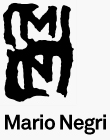Let us approach sculpture in a virginal, natural way, without pre-set programs or prejudices. Let us come to grips with it and devote ourselves to it completely, as to a priesthood, in the purest, most determined, moral, honest and – we might even say – ingenuous way.
Let us not give in to the facile and useless game of purely exterior and literary tricks and inventions; let us not follow aesthetic categories that belong only to philosophical speculations destined to remain for the most part at the pure state of theories. Let’s leave the programs up to those who do not know how to grant life to their phantoms (if indeed they have any), letting them get lost in the vicious labyrinths of useless discourse. Let us leave all this to the lettered critics and the pseudo-painter-literati (therefore not painters).
Let us plunge into our work with determination, and may the effort of each day be our most vivid reality. Let us work with the humility or modesty sculptors had in the 1200s and 1300s, not being intellectuals but striving only for the absolute, the essential, the “True.”
Let us always strive to be great, to achieve, that is, a true style, and even if one hundred of us fail, at least one of us, or half of one, will hit the mark.
Let us make our craft our reason for being, the only and most merciless of reasons. Let it never be a sin of pride, remembering that only through constant labor can we grow and progress, and that masturbations of a purely intellectual and literary order can add nothing to our potential as sculptors. Let us not improvise, not give in to the mere fancy that with time has betrayed (and the chronicles of this century prove it) even some of the most imaginative jugglers of modern sculpture. Instead, let us build with love and intelligence, so that each of our works will have a profound and poetic reason for being. Let us put aside every weakness or complacency, remembering that beautiful things are “natural,” i.e. they have a sense of the eternal and the true, and give the impression of having always existed, though they came forth from the hands of men today, just like the things of nature, which do not belong (and do not have the sense of) to any time, but seem to have always existed, perhaps even before they were created by God.
Let us act so that in our works the others, those beings that suffer, can recognize a small part of themselves; only in this way can the images to which we give life then be true.
If there is not at least a heartbeat of humanity in our things, they will not be true and they will stand there inert, outside of life, which is to say they will be cold, academic and therefore useless. Everything that is arbitrary and illusory unavoidably will fall, in time.
But that will suffice. What we cared about saying has been said, clearly, out loud.
Though there is still one important thing.
Let us make it so the best of us are sure of themselves, but not full of themselves.
Let us not assume postures, not pronounce or listen to many speeches; let us work, and if we have something to say let us say it with our drawings, our sculptures, if we are granted the grace to do so. May each of us know his own limits, but give all of himself; may we be modest, because modesty, among other things, is the beginning of all wisdom.
Let us aspire to be artisan-stonecutters, rather than sculptor-intellectuals (cerebral?), as were the anonymous makers of the Romanesque and Gothic cathedrals, simple, humble people but full of ardor, poetry and life.

